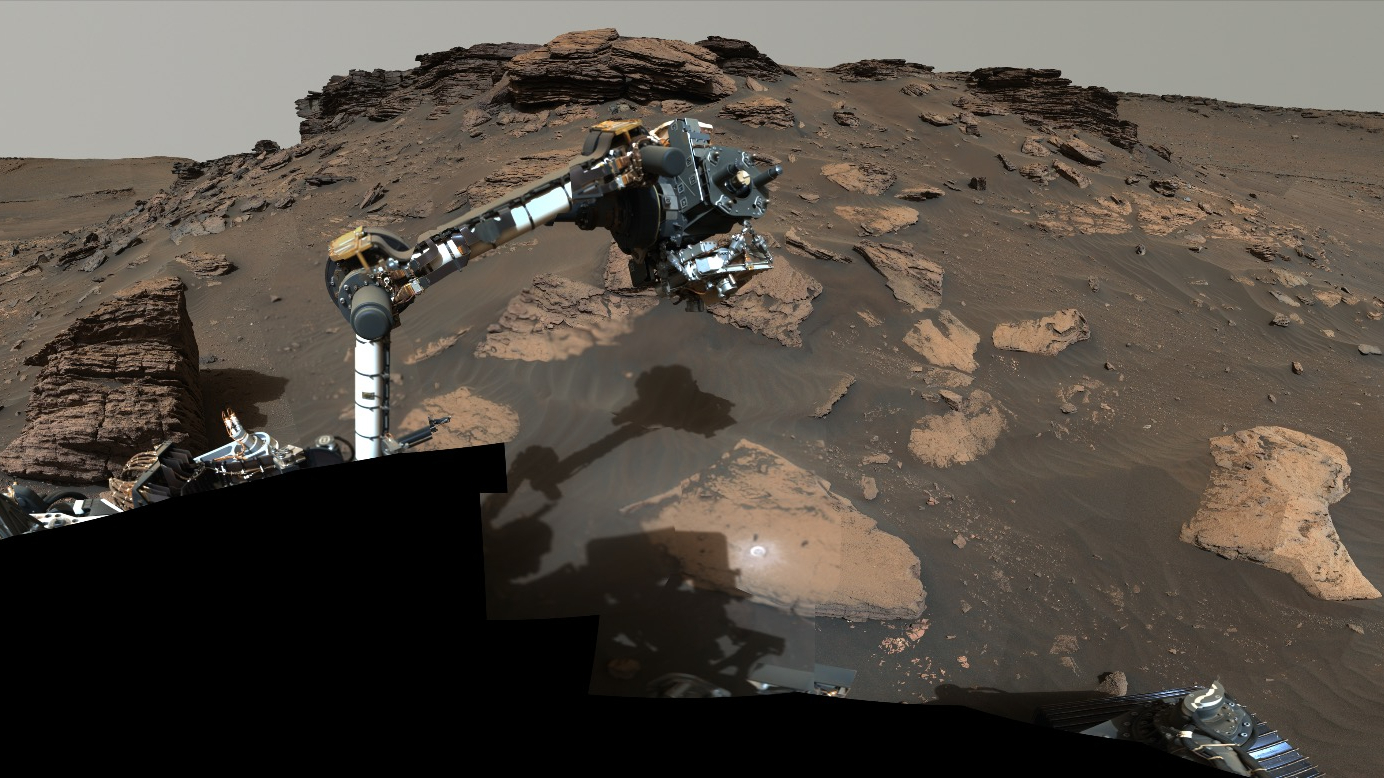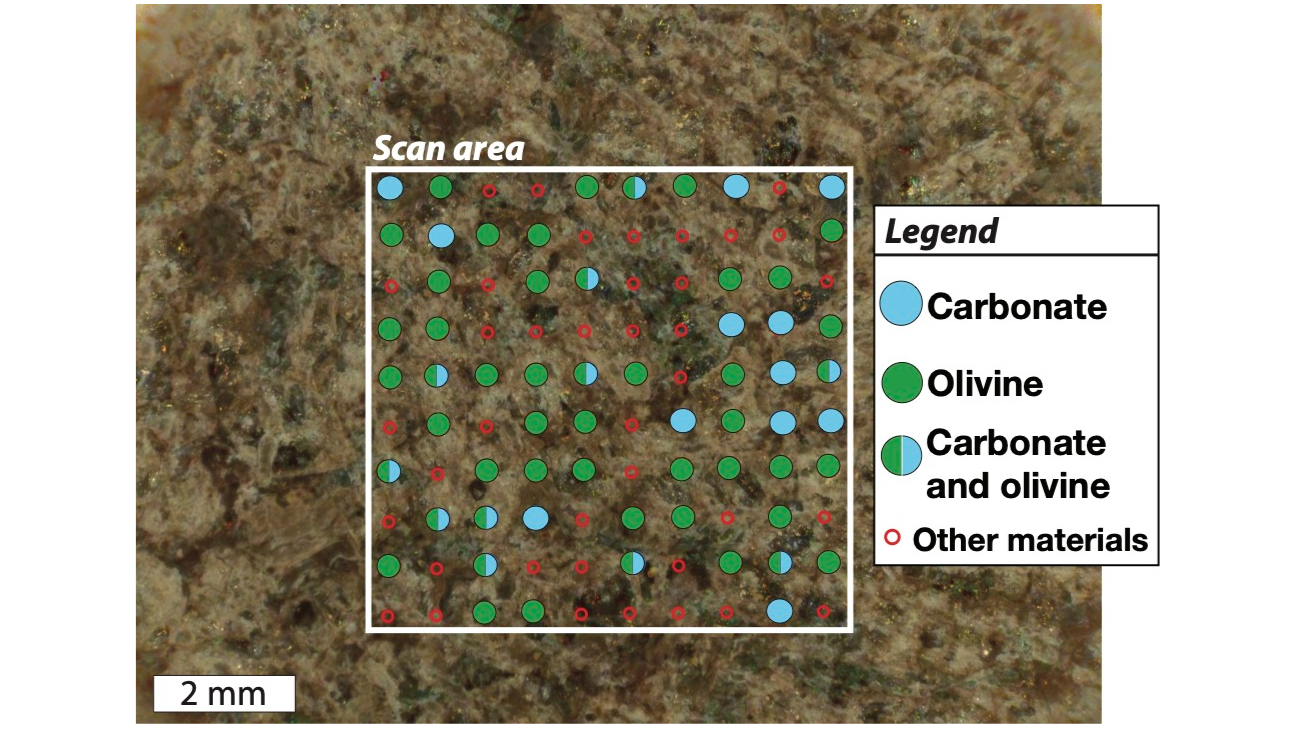Building blocks of Mars life? Perseverance rover digs up diverse set of organic molecules on the Red Planet
But organics can be produced by geological processes as well as biological ones.

NASA's Perseverance rover has found a diverse menagerie of organic molecules in a Martian crater, a new study reports.
Organic compounds are molecules composed of carbon, and often include other elements such as hydrogen, oxygen, nitrogen, phosphorus and sulfur. Previously, scientists had detected several types of organic molecules of Martian origin — in meteorites blasted off Mars by cosmic impacts that landed on Earth, and in Gale Crater on the Red Planet, which NASA's Curiosity rover has been exploring since 2012.
"They are an exciting clue for astrobiologists, since they are often thought of as building blocks of life," study lead author Sunanda Sharma, a planetary scientist at the California Institute of Technology in Pasadena, told Space.com.
However, "importantly, they can be created by processes not related to life," Sharma emphasized. As such, investigating what organic molecules exist on the Red Planet and how they were created is key to understanding what may or may not be linked to life on Mars.
Related: 12 amazing photos from the Perseverance rover's 1st year on Mars
"As planetary scientists and astrobiologists, we are very careful with laying out claims — claiming that life is the source of organics or possible biosignatures is a last-resort hypothesis, meaning we would need to rule out any non-biological source of origin," Sharma said.
In the new study, Sharma and her colleagues analyzed data from Perseverance. In February 2021, the rover landed within Jezero Crater, the site of an ancient lake basin that prior work suggested displayed high potential for past habitability. The crater floor also possesses clays and other minerals that may preserve organic materials.
Get the Space.com Newsletter
Breaking space news, the latest updates on rocket launches, skywatching events and more!
Specifically, the scientists examined data from the Scanning Habitable Environments with Raman and Luminescence for Organics and Chemicals (SHERLOC) instrument onboard Perseverance. SHERLOC is the first tool on Mars capable of conducting fine-scale mapping and analysis of organic molecules.
The researchers focused on SHERLOC data from Máaz and Séítah, two rock formations on the Jezero Crater floor. When ultraviolet light from SHERLOC illuminates organic compounds, they can glow much like material beneath a blacklight. The fingerprint of wavelengths in the glow from a molecule can help identify it.
Sharma and her colleagues found signs of organic molecules in all 10 targets that Perseverance drilled into at Máaz and Séítah, covering a span of time from at least about 2.3 billion to 2.6 billion years ago. These "point to the possibility that building blocks of life could have been present for a long time on the surface of Mars, in more than one place," Sharma said.

The scientists discovered evidence of many different classes of organic molecules. These occurred in a variety of patterns in space within Máaz and Séítah, suggesting they might have originated from a number of different minerals and mechanisms of formation. These organic compounds mostly appeared connected to minerals linked to water.
"Seeing that the possible organic signals differ in terms of type, number of detections and distribution between the two units of the crater floor was surprising and exciting," Sharma said. "That opens the possibility of different formation, preservation or transportation mechanisms across the crater and, more broadly, the surface of Mars."
The scientists could not identify specific organic molecules. "To confirm the presence of organics and their specific types, we would need the samples to be returned to Earth," Sharma said. "That's our goal."
The scientists detailed their findings online today (July 12) in the journal Nature.
Join our Space Forums to keep talking space on the latest missions, night sky and more! And if you have a news tip, correction or comment, let us know at: community@space.com.

Charles Q. Choi is a contributing writer for Space.com and Live Science. He covers all things human origins and astronomy as well as physics, animals and general science topics. Charles has a Master of Arts degree from the University of Missouri-Columbia, School of Journalism and a Bachelor of Arts degree from the University of South Florida. Charles has visited every continent on Earth, drinking rancid yak butter tea in Lhasa, snorkeling with sea lions in the Galapagos and even climbing an iceberg in Antarctica. Visit him at http://www.sciwriter.us









